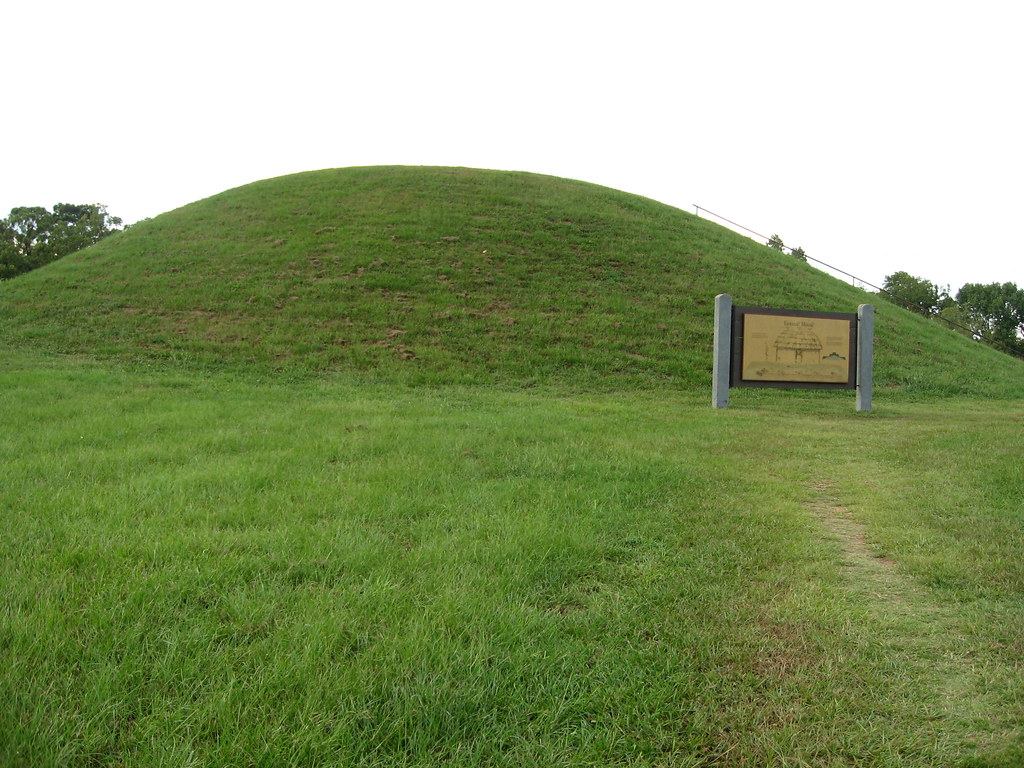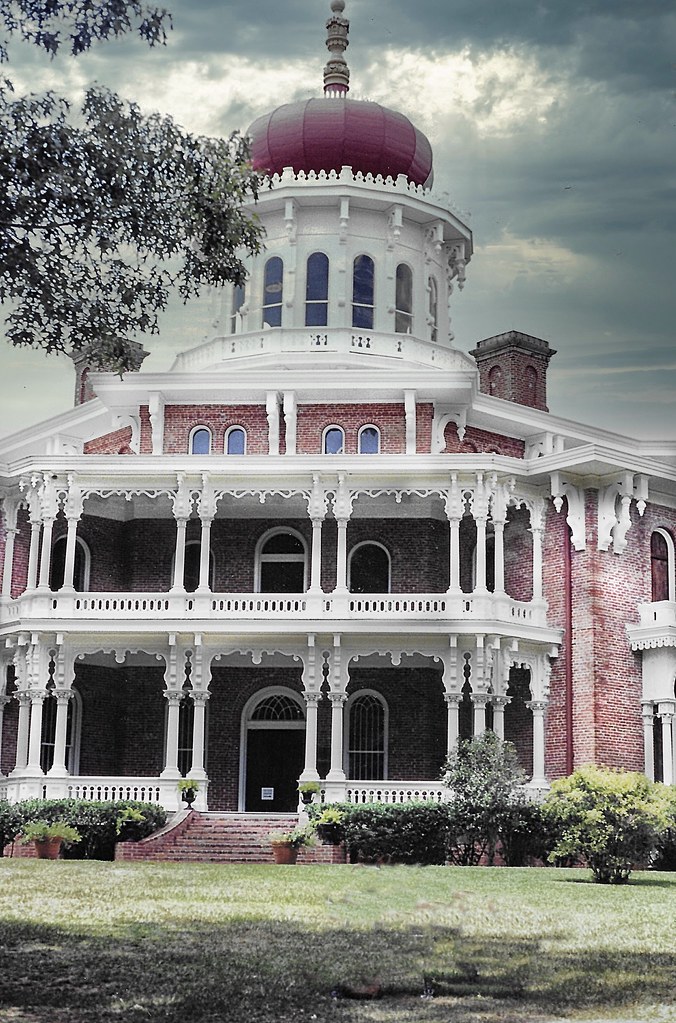
We may earn money or products from the companies mentioned in this post. This helps support what we do and in no way costs you a thing.
Mississippi is a state steeped in history, with a rich cultural heritage that spans centuries. From the Civil War to the Civil Rights Movement, Mississippi has played a pivotal role in shaping the course of American history. As such, it should come as no surprise that the state is home to a wealth of must-see historic landmarks in Mississippi and sites that are well worth visiting.

Whether you’re a history buff or simply interested in learning more about Mississippi’s past, there are plenty of must-see landmarks and sites to explore. From antebellum homes to Native American sites, the state is home to a diverse array of historic attractions that offer a glimpse into Mississippi’s fascinating past.
So, if you’re planning a trip to the Mississippi, be sure to add some of these must-see historic landmarks to your itinerary.
Mississippi’s Role in American History
Mississippi played a significant role in American history. From the Civil War to the Civil Rights Movement, Mississippi has been at the forefront of many pivotal moments in American history.

Civil War
During the Civil War, Mississippi was a major battleground. The state was the site of several important battles, including the Battle of Vicksburg, which was a turning point in the war. The city of Vicksburg was a crucial stronghold for the Confederacy, and its capture by Union forces gave the Union control of the Mississippi River. The Vicksburg National Military Park commemorates this important battle and is a must-see for history buffs.
Civil Rights Movement
Mississippi was also a central location in the Civil Rights Movement. The state was the site of many important events, including the murder of Emmett Till, the Freedom Summer campaign, and the assassination of civil rights leader Medgar Evers. The Mississippi Civil Rights Museum in Jackson is an excellent resource for learning about this important chapter in American history.
Native American History
Before European settlers arrived, Mississippi was home to many Native American tribes, including the Choctaw, Chickasaw, and Natchez. The Mississippi Band of Choctaw Indians is still present in the state today and operates several casinos and resorts. The Natchez Trace Parkway is a scenic drive that follows the path of an ancient Native American trail.
Music History
Mississippi is also known for its rich musical history. The state is the birthplace of blues music, with many famous blues musicians hailing from Mississippi, including B.B. King and Muddy Waters. The Mississippi Blues Trail is a collection of markers and sites throughout the state that commemorate the history of blues music.

Mississippi’s role in American history is significant and should not be overlooked. Whether you are interested in the Civil War, Civil Rights Movement, Native American history, or music, Mississippi has something to offer.
Civil War Landmarks
If you’re interested in the Civil War, Mississippi has several must-see historic landmarks that you shouldn’t miss. Here are two must-see locations to add to your itinerary.
3201 Clay St, Vicksburg, MS 39183
Vicksburg National Military Park is a 1,800-acre park that commemorates the Battle of Vicksburg, which took place in 1863. The park features over 1,300 monuments, markers, and plaques, as well as a 16-mile tour road that takes visitors through the battlefield. You can also explore the park’s museum, which houses artifacts from the Civil War era.
In addition to the battlefield, the park also features the USS Cairo Museum, which showcases the remains of the USS Cairo, a Union ironclad gunboat that was sunk during the Battle of Vicksburg. The museum includes interactive exhibits and a film about the history of the ship.
Beauvoir – Jefferson Davis Home and Presidential Library
2244 Beach Blvd, Biloxi, MS 39531
Beauvoir is the former home of Confederate President Jefferson Davis. The property was purchased by Davis in 1877 and served as his retirement home until his death in 1889. Today, the property is a museum that showcases Davis’s life and the history of the Confederacy.
In addition to the museum, Beauvoir also houses the Presidential Library, which contains a collection of books and manuscripts related to the Civil War era. The library also hosts lectures and other events throughout the year.
If you’re interested in the Civil War, Vicksburg National Military Park and Beauvoir are two must-see landmarks in Mississippi. Take your time exploring these historic sites and learning about the significant events that took place there.
Civil Rights Landmarks
Mississippi played a significant role in the American Civil Rights Movement, and as a result, there are many landmarks throughout the state that commemorate the struggles and triumphs of the movement. Here are two must-see civil rights landmarks that you should visit.
Medgar Evers Home Museum
2332 Margaret W Alexander Dr, Jackson, MS 39213
Located in Jackson, the Medgar Evers Home Museum is a must-see landmark for anyone interested in civil rights history. The museum is dedicated to the life and legacy of Medgar Evers, a prominent civil rights activist who was assassinated in 1963.
The museum features exhibits on Evers’ life and work, as well as artifacts from the Civil Rights Movement. Visitors can also tour Evers’ home, which has been preserved as it was at the time of his death.
Mississippi Civil Rights Museum
222 North St #2205, Jackson, MS 39201
The Mississippi Civil Rights Museum is located in Jackson and is dedicated to telling the story of the Civil Rights Movement in Mississippi. The museum features eight galleries that cover the period from slavery to the present day. Exhibits include interactive displays, artifacts, and multimedia presentations. The museum also features a memorial to the victims of lynching in Mississippi.

Both of these landmarks are must-sees for anyone interested in civil rights history. They offer a unique and powerful perspective on the struggles and triumphs of the Civil Rights Movement in Mississippi.
Native American Landmarks
Mississippi has a rich Native American history and there are several landmarks that showcase this history. Here are a few must-see Native American landmarks in Mississippi:
Emerald Mound Site
Emerald Mound Rd, Natchez, MS 39120
Located in Natchez, the Emerald Mound Site is the second-largest ceremonial mound in the United States. Built by the Mississippians between 1200 and 1730 AD, the mound is 35 feet tall and covers eight acres. The site also includes a plaza and smaller mounds. The Emerald Mound is believed to have been used for religious ceremonies and political gatherings.
Grand Village of Natchez Indians
400 Jefferson Davis Boulevard, Natchez, MS 39120
The Grand Village of Natchez Indians is located in Natchez and is a National Historic Landmark. The site includes three mounds and a plaza. The largest mound is 30 feet tall and is believed to have been used for religious ceremonies.
The site was home to the Natchez tribe until the late 17th century when the French arrived. The Grand Village of Natchez Indians is a great place to learn about the Natchez tribe and their way of life.
These are just a couple of the Native American landmarks in Mississippi. If you are interested in learning more about the history of the Native Americans in Mississippi, be sure to check out these sites.
Music and Literary Landmarks
Mississippi is home to some of the world’s most iconic writers and musicians. Here are a few must-see landmarks for music and literature enthusiasts.
Mississippi Blues Trail
The Mississippi Blues Trail is a collection of over 200 markers and interpretive signs that showcase the state’s rich blues heritage. The trail highlights important people, places, and events in the history of blues music. :
- Dockery Farms: Known as the “birthplace of the blues,” Dockery Farms was a plantation where many blues musicians, including Charley Patton and Robert Johnson, lived and performed.
- Crossroads: The intersection of Highways 61 and 49 in Clarksdale is said to be where Robert Johnson sold his soul to the devil in exchange for his musical talent.
- B.B. King Museum and Delta Interpretive Center: This museum in Indianola celebrates the life and legacy of the “King of the Blues,” B.B. King.
Rowan Oak – William Faulkner’s Home
916 Old Taylor Rd, Oxford, MS 38655
Rowan Oak, located in Oxford, was the home of Nobel Prize-winning author William Faulkner. The house, which Faulkner purchased in 1930, is now a museum that offers visitors a glimpse into the life and work of one of America’s greatest writers.
- Faulkner’s Writing Studio: The studio where Faulkner wrote many of his most famous works, including “As I Lay Dying” and “The Sound and the Fury.”
- The Gardens: The gardens at Rowan Oak were designed by Faulkner himself and feature a variety of trees, shrubs, and flowers.
- The House: Visitors can tour the rooms of the house, which have been preserved much as they were when Faulkner lived there.
Architectural Landmarks
Mississippi is home to some of the most beautiful and historic architectural landmarks in the country. Here are two must-see landmarks to add to your list.
Longwood Plantation
140 Lower Woodville Rd, Natchez, MS 39120
Longwood Plantation, also known as Nutt’s Folly, is a stunning example of the octagonal house style that was popular in the mid-19th century. The house was built for Haller Nutt, a wealthy planter, and his family.

However, the construction was never completed due to the outbreak of the Civil War. As a result, the family only lived on the first floor of the house, leaving the upper floors unfinished.
Today, Longwood Plantation is open to the public and offers guided tours of the first floor, which is fully furnished with period pieces.
Old Capitol Museum
100 State St, Jackson, MS 39201
The Old Capitol Museum in Jackson is a must-see for anyone interested in Mississippi’s political history. The building served as the state capitol from 1839 until 1903. During this time, it was the site of many important events, including the passage of the Mississippi Secession Ordinance in 1861.
Today, the building has been restored to its original grandeur and houses a museum dedicated to Mississippi’s political history. Visitors can explore exhibits on topics such as the Civil War, the Civil Rights Movement, and the state’s governors.
When visiting these architectural landmarks, be sure to take your time and appreciate the intricate details and rich history that each one has to offer.
Natural Landmarks
Mississippi is home to a variety of natural landmarks that attract visitors from all over the world. Here are two of the most must-see natural landmarks in Mississippi.
Windsor Ruins
Rodney Rd, Port Gibson, MS 39150
Located in Claiborne County, Windsor Ruins is a must-see destination for history buffs. The ruins are all that remain of Windsor, a mansion that was built in the mid-19th century. The mansion was destroyed by a fire in 1890, but the ruins still stand today. The 23 standing columns are a popular photo spot for tourists.
Cypress Swamp
Natchez Trace Pkwy, Canton, MS 39046
The Cypress Swamp in Sky Lake Wildlife Management Area is one of the most unique natural landmarks in Mississippi. The ancient cypress trees in the swamp are some of the biggest on the planet, with the biggest measuring 47′ in circumference and 70′ in height!
The swamp is also home to a variety of wildlife, including alligators, snakes, and birds. Visitors can take a guided tour of the swamp to learn more about the history and ecosystem of this unique natural wonder.
Whether you’re a history buff or a nature lover, Mississippi has something for everyone. Be sure to add these natural landmarks to your must-see list when visiting the Magnolia State.

Frequently Asked Questions about the Must-See Historic Landmarks in Mississippi
What are some must-see historic landmarks in Mississippi?
Mississippi is home to many must-see historic landmarks. Some of the most popular ones include the Vicksburg National Military Park, the Natchez Trace Parkway, the Old Capitol Museum in Jackson, and the Beauvoir estate in Biloxi. These sites offer a glimpse into Mississippi’s rich history and are definitely worth a visit.
Which historical sites are worth visiting in Biloxi, Mississippi?
Biloxi is home to several historic landmarks that are worth visiting. The Beauvoir estate, which was once the home of Jefferson Davis, the President of the Confederate States of America, is a popular destination. Visitors can take a tour of the estate and learn about its history.
The Biloxi Lighthouse, which was built in 1848, is another must-see landmark. The lighthouse is open for tours and offers stunning views of the Gulf of Mexico.
What is the significance of Vicksburg National Military Park?
Vicksburg National Military Park is one of the most important historic landmarks in Mississippi. The park was the site of a major battle during the American Civil War and is considered a turning point in the war. Visitors can take a tour of the park and learn about the history of the battle and its impact on the war.
What are three famous landmarks in Mississippi?
Mississippi is home to many famous landmarks, but some of the most popular ones include the Elvis Presley Birthplace in Tupelo, the Mississippi State Capitol in Jackson, and the B.B. King Museum and Delta Interpretive Center in Indianola. These sites offer a unique glimpse into Mississippi’s rich cultural history.
What is Mississippi’s most famous historical site?
Mississippi’s most famous historical site is arguably the Vicksburg National Military Park. The park is a national landmark and is considered one of the most important sites in American Civil War history.
What are four important events in Mississippi’s history?
Mississippi has a rich and complex history, but some of the most important events include the Civil War, the Civil Rights Movement, the Great Mississippi Flood of 1927, and Hurricane Katrina. These events have had a significant impact on Mississippi’s culture, economy, and society.


